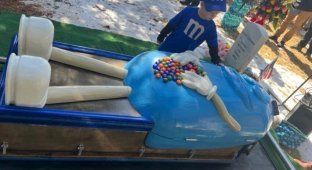There are many examples of blue-skinned characters in modern culture, from Dr. Manhattan to Beast from the X-Men. 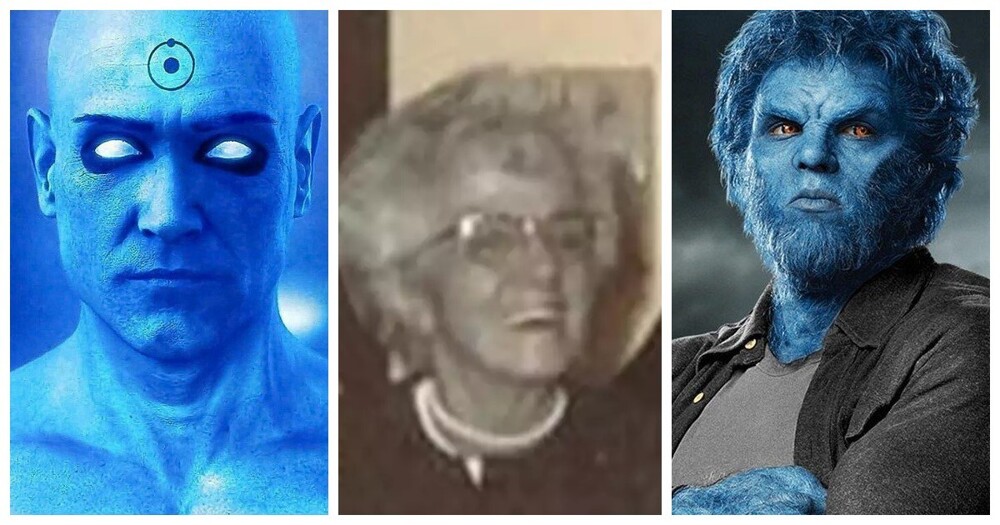
But they are all fictional. Whereas in history there were real people with blue skin. Real, lively and strange. 
Hazard, Kentucky, near where the Fugates lived
This story begins in 1820, when Martin Fugate and his wife Elizabeth Smith settled in Troblesome Creek, a remote part of the Appalachian Mountains in Kentucky.
Presumably Martin Fugate, the founder of the family, a French orphan, himself had blue skin, but this has not been confirmed. His firstborn, Zechariah, was born blue-skinned, as were three other of their seven children.
Since the family lived very closed and secluded, few people knew about them except their neighbors. 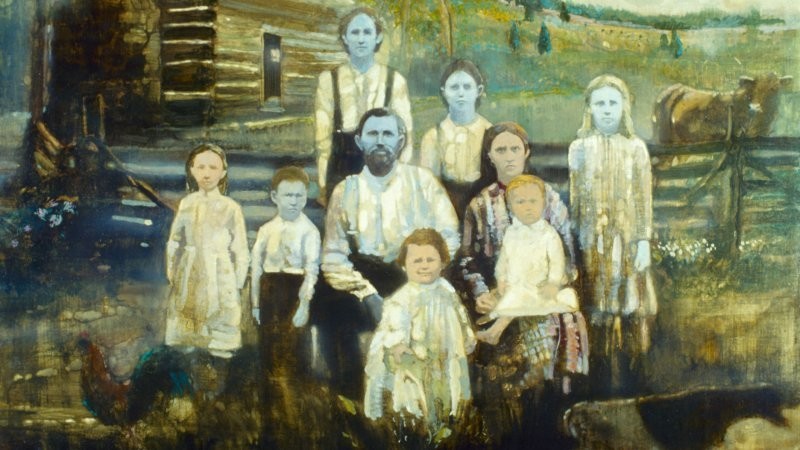
Martin and Elizabeth Fugate with their children, based on the New York Post
The Fugate family had an extremely rare genetic defect that causes methemoglobinemia. Because of this defect, the blood does not carry enough oxygen.
As a result, the blood becomes darker, the skin appears blue, and the lips appear purple. 
Patient with manifestations of methemoglobinemia
Methemoglobinemia can cause seizures and developmental delays, but the Fugates avoided that fate. With the exception of blue skin, according to the surviving data, the disease did not manifest itself in any way in terms of side effects.
Because the disease is caused by a recessive gene, it would likely go away over the years. But, unfortunately, this did not happen. 
Diagram showing the recessive trait of blue in a family.
The Fugates lived in isolation in an area where there were no railroads or roads. As a result, most had no choice but to intermarry with cousins and other more distant relatives.
Other branches of the family who intermarried included the Stacys, Smiths, Riches and Combs.
Treatment and deliverance 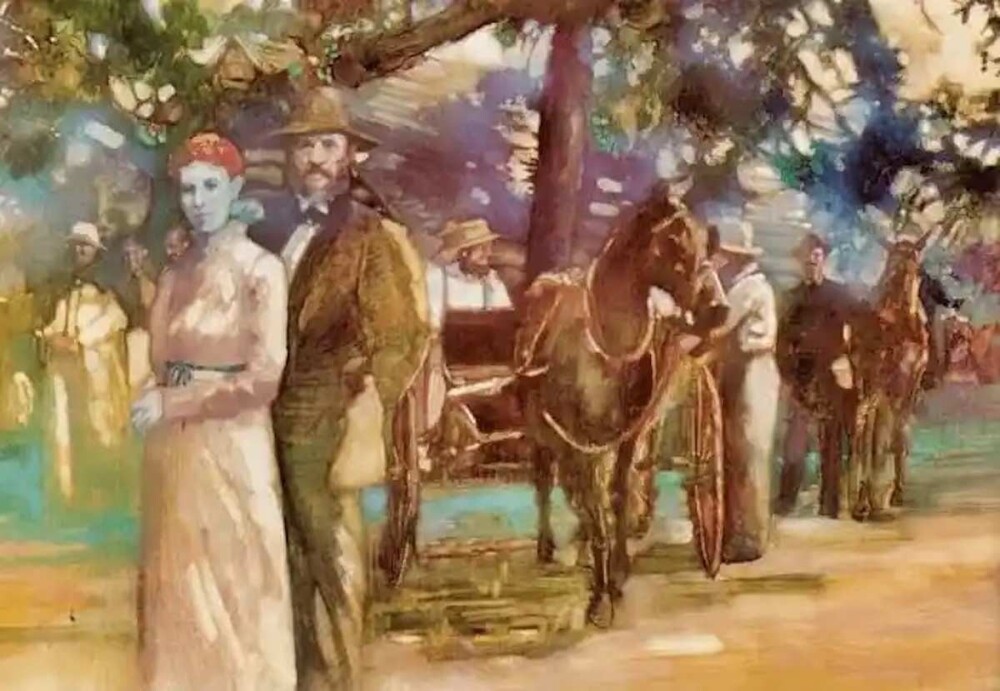
Luna Fugate - descendant of Martin, with her husband John Stacy
After living in relative obscurity for a century, the Fugates came to the attention of Dr. Madison Covin, a hematologist at the University of Kentucky.
With the information obtained second-hand, Covin traveled to the hills of Kentucky, eager to learn more about the Fugates. During his search, he met Ruth Pendergrass, a nurse who had previously treated the Fugates.
When Pendergrass was working at the county health department, a blue woman asked for a blood test and was intimidated by her appearance. The nurse assumed that the woman was having a heart attack, which manifested itself as blue skin. 
Hematologist Dr. Madison Covin
She identified herself as a member of the Combs family of Ball Creek. It turned out that her sister was Fugate.
After Pendergrass joined Covin, it didn't take long for them to find the Fugates. After interviewing several family members, Kovin came to the conclusion that their blood lacks an enzyme that helps it function normally. 
Recreating a conversation between Patrick and Rachel Ritchie - descendants of the Fugates - with Dr. Covin: a screenshot from the television series "Secrets at the Museum"
The solution turned out to be surprisingly simple. Kovin injected them with methylene blue.
It seems counter-intuitive and stupid to inject someone with blue dye to treat a condition that turns their skin blue. But it worked. External changes happened very quickly.
The effect was temporary, but with the help of tablets it was possible to maintain it for as long as desired. 
According to Covin, the Fugates he treated were completely delighted when the blue disappeared. For them, such skin was a stigma of shame.
Neighbors were not particularly kind to people who were considered different from everyone else.Therefore, the family distanced itself from other members of its community.
When Kovin treated them, it was clear that the poor fellows felt like outcasts. As a result, they rarely sought treatment and had no contact with the outside world.
Modern Fugates 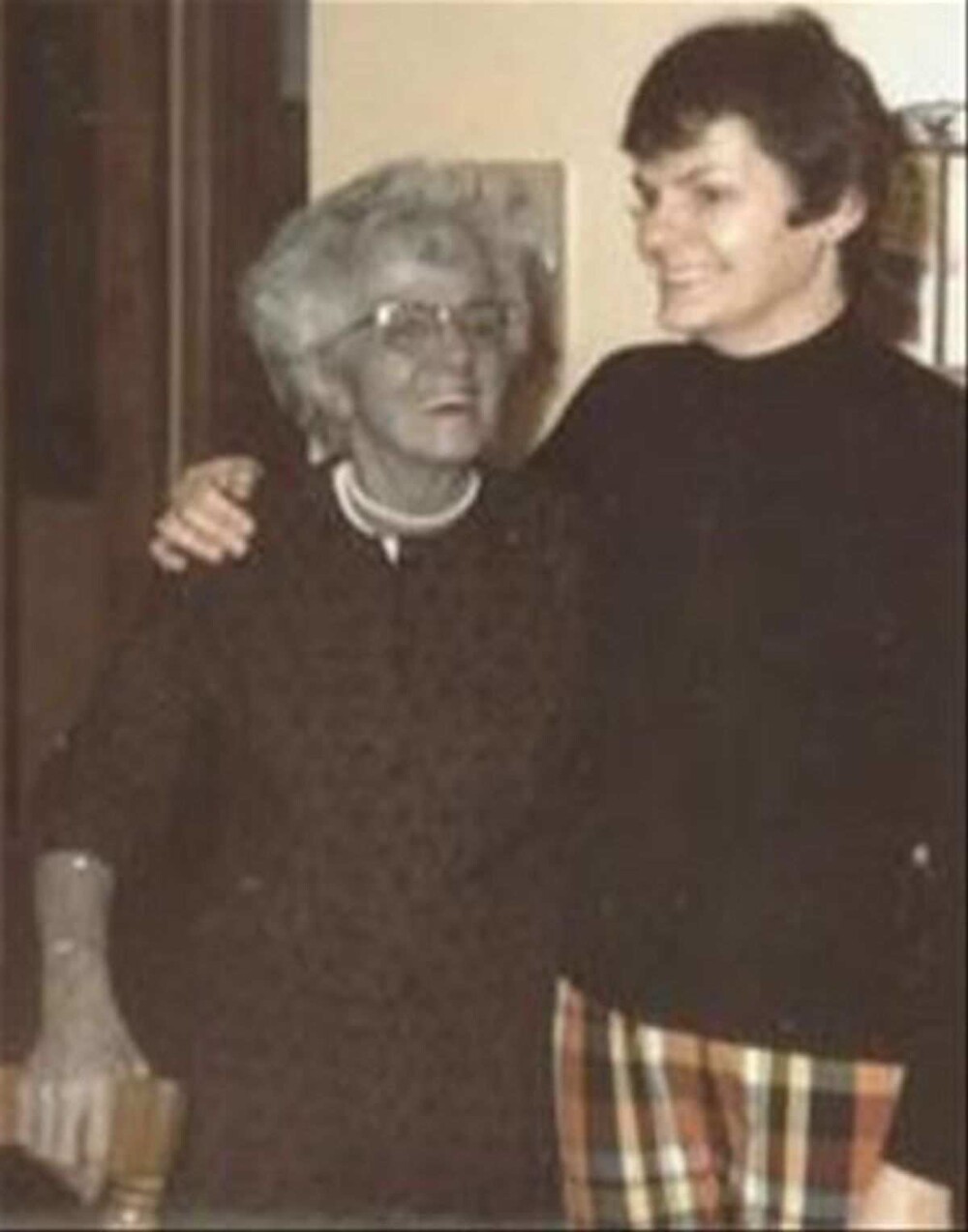
Luna Fugate-Stacy was the bluest of the family
In the decades following Covin's treatment, the Fugates had large families, and some of their children were born blue-skinned. But as their community grew, so did the gene pool. The recessive gene gradually disappeared.
In 1975, the last blue-skinned Fugate was born. Benji Stacy was born almost purple. The doctor was so alarmed that he prescribed a blood transfusion for the baby. The doctor was reassured by the baby’s grandmother, explaining the situation with the pedigree. After which doctors came to the conclusion that the baby had inherited a rare disease.
The blue color naturally faded over the next few weeks, although the boy's lips and nails turned purple in the cold.
Today, the Fugate family is not very open about their strange genetics and does not make contact with the press.
At least one descendant of the Fugates is known to still live in this part of Kentucky.
Is it possible to repeat? 
Benji Stacy is the last of the family to be born with blue skin
The likelihood of activation of the methemoglobinemia gene is extremely low. But the recessive gene is still present in many of the family's descendants. So if they marry someone else with the recessive gene, the disease may reappear.
Add your comment
You might be interested in:














